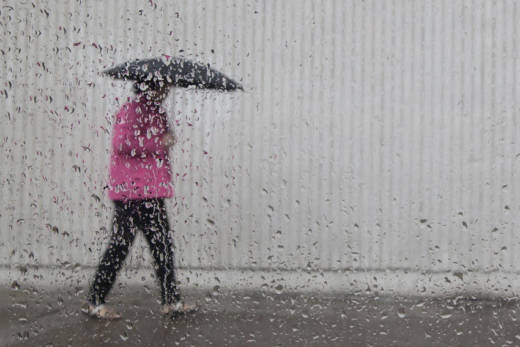Adding to the worry are lingering concerns over groundwater in the southern San Joaquin Valley and parts of the Central Coast. According to Jay Lund, who heads the Center for Watershed Sciences at UC Davis, “Groundwater in the southern part of the Central Valley remains more than 10 million acre-ft below pre-drought levels.” That’s more than twice the capacity of Lake Shasta, California’s largest reservoir.
Perhaps more significant is what the board did not do: it did not lift emergency rules all together, nor did it return to the previous state-imposed conservation quotas on local water suppliers.
That didn’t stop local water managers from lining up to protest the extension of emergency rules, asking, “Where’s the emergency?”
“The water conditions that we are seeing are nowhere near what we we would term an emergency,” said Paul Jones, who manages the Eastern Municipal Water District in Riverside County. “We really think you need to shift to more of a long-term efficiency strategy.”
Gomberg argues that the current rules are in line with that.
“This is a really commonsense set of requirements,” he told KQED. “We have made adjustments, we have made this flexible, we have made it responsive to local conditions.”
Locals will still determine their own conservation “tiers” using a stress test designed to show whether urban areas have enough supply to withstand a three-year drought. More than 80 percent of the state’s local suppliers passed that test.
Gov. Brown favors a five-year test and went so far as to write that into an executive order last May — but the water board says implementing that will require legislative action.
One new wrinkle was added to the rules: cities and counties may no longer penalize property owners for complying with water restrictions, even if it means letting their lawns go brown. Homeowners’ associations were already banned from doing so.
Brown has already ordered the water board to make certain prohibitions “permanent,” a process that will take months to codify. Those include excess watering of landscapes (that creates runoff), watering at all within 48 hours of rainfall, washing cars without using a shutoff nozzle, hosing down sidewalks and driveways, and the widely-ignored proscription on eateries from serving water unless customers ask for it.
The temporary rules could be relaxed sooner than September. Gomberg says the board could opt to revisit the state’s water conditions in May and possibly rescind the rules at that time. Or, he says, the governor could decide to lift his statewide drought emergency declaration, in place since January of 2014.
